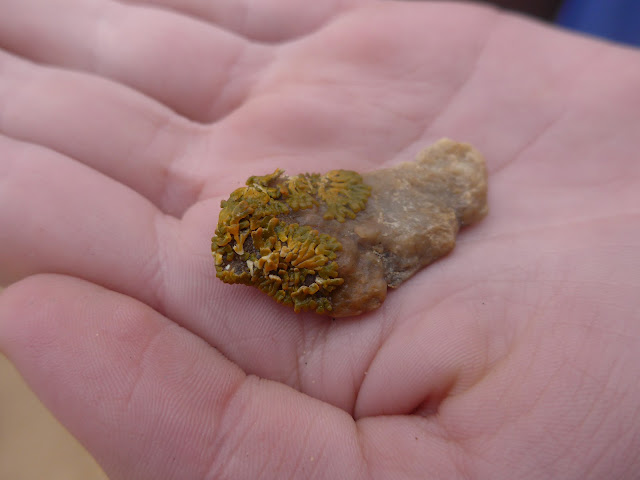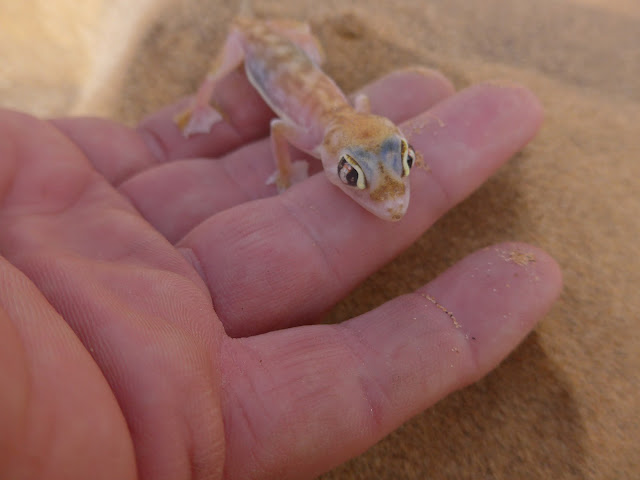 |
| A grain elevator in rural Zambia - felt like I was back at home in Kansas. We stopped on the way from Lusaka to Livingstone (Victoria Falls) for lunch at this chips place. |
 |
| The MCC guesthouse in Lusaka comes with a large but friendly dog. We're always excited about new dogs. |
 |
| Vic falls, one of many views |
 |
| As usual at major tourist places, the baboons are prepared to take advantage of any tourist food. Here a male yawning, as a threat display, on our path. |
 |
| No idea what this sign really means - but whatever it is sounds really cool! |
 |
| I (Doug) usually take the pictures, here's one that I'm actually in. |
 |
| At the Zambia/Zimbabwe border, lots of trucks taking copper slabs out from the copper belt of Zambia and the DRC. |
 |
| Mongooses are always fun to watch |
 |
| On the 21 hour bus ride from Livingstone to Windhoek (Namibia), traditional thatch homes and fences that are considerably different from what we see in Kenya. |
 |
| Stopping just inside Namibia for a police check. They were friendly, but took some explaining on what the white powder was in my bag (laundry detergent). |
 |
| Watching elephants from the bus window while driving through the Caprivi strip of Namibia. |
 |
| First night with the camping gear, figuring out how to set the tents up correctly. |
 |
| Catching some morning warmth in the Naukluft mountains near our campsite. It was winter in Namibia, so chilly at night (but nice and warm in the day) |
 |
| Quiver tree |
 |
| Striking the usual pose, bird book and binoculars in hand. |
 |
| Along our 19 km hiking loop through the Naukluft mountains |
 |
| The Naukluft have Mountain Zebra (a different species from what we usually see). At first we only saw dead ones, but later saw a few live ones. |
 |
| Lost for a while on a zebra game trail, we finally made it back to the main trail as indicated by the yellow foot mark. |
 |
| Gnarled trees on the mountain slopes; we never figured out the names on many of the interesting desert trees we saw. |
 |
| Driving in Namibia was a different experience from Kenya - fast, smooth, no traffic. And signs for potholes (although we never ran across one on this road!) |
 |
| Sesriem canyon |
 |
| Lots of oryx, these were some of our favorite mammals on the trip. |
 |
| Starting out on the morning hike up big daddy, sand dune near deadvlei |
 |
| Running down the slip face of big daddy, a 1000 ft vertical drop. |
 |
| Deadvlei |
 |
| Solitaire, an outpost on the drive to Swakopmund, well known for its good bakery items (verified). |
 |
 |
| On our dunes tour near Swakop, designed to find all sorts of life in the Namib desert. Here the guide shows where a small viper lays in wait for its prey. |
 |
| Horned viper |
 |
| Silverfish, the protein base for animals in the Namib desert. |
 |
| The cold ocean current reliably produces a fog which goes far inland. This allows the growth of lichens.. |
 |
| and cynanobacteria. |
 |
| Namaqua chameleon |
 |
| Palmatto Gecko, lives in burrows on the face of the dunes. Like most life, it comes out at night. |
 |
| The dunes have well defined layers |
 |
| Plant (name forgotten!) that produces a melon that the native people relied on while wandering up and down the coast. All the plants now legally belong to them. |
 |
| On the tour, dune buggy took us to the top of the dunes. |
 |
| And we had a roller-coaster tour driving up and down dunes |
 |
| Can't be in southern Africa without having a braai. Campsites, no matter how remote or empty, seemed to always have a kiosk selling braai packets. |
 |
| Morning light at Spitzkoppe |
 |
| Hyraxes, called dassies in southern Africa |
 |
| Along the skeleton coast, lichen growing from the daily fog. |
 |
| Cape Cross seal colony |
 |
| We were somewhat unprepared for the shear number of seals, everywhere you look |
 |
| Diogo Cao first stopped at Cape Cross way back in 1485; the original cross erected is gone, and replace by a replica. |
 |
| No other options for camping along this stretch except the promisingly-named "St Nowhere" campground |
 |
| The only campers at St Nowhere. A good wind blew day and night making the evening quite chilly. |
 |
| Hundreds of kilometers of beach without another soul in sight along the skeleton coast. |
 |
| Welwitschia, female cone |
 |
| Thousands of years old, a conifer growing out on the gravel with no other plants around |
 |
| As we head inland, grass starts to appear |
 |
| Stretched for special treats on Evan's birthday, we settled for a sugarpuffs substitute. |
 |
| The campgrounds were all great, this like many with plenty of good rock scrambling to be had. |
 |
| Camelthorn Cafe in Otjiwarongo was a find, serving the "largest burgers in Namibia". This was easy to believe, Cristina's schnitzel burger fed her plus polished off the hunger of two teenage boys. |
 |
| Waterburg plateau from our campsite |
 |
| Boys eating 1 kg of yoghurt to try and stave off their hunger for an hour before supper is ready. |






































No comments:
Post a Comment